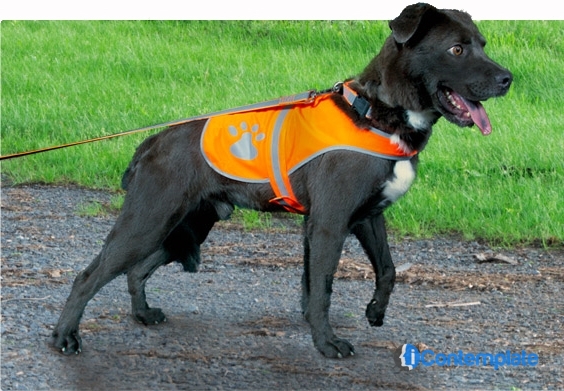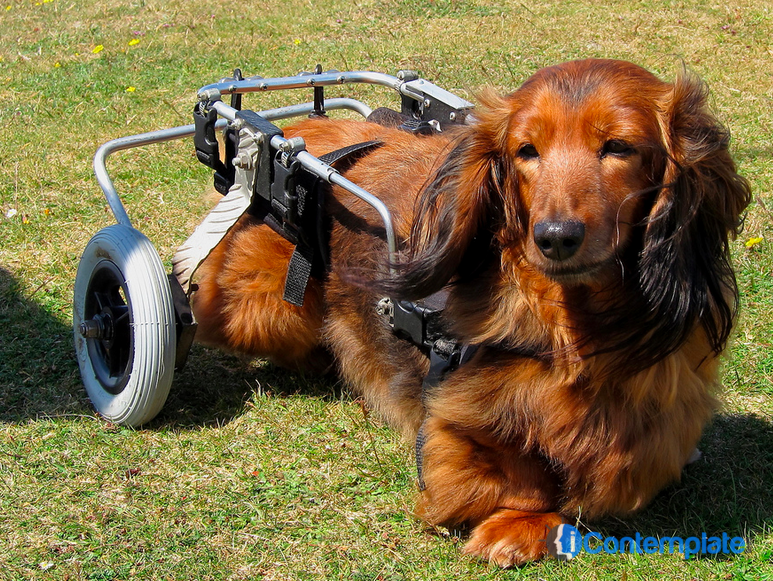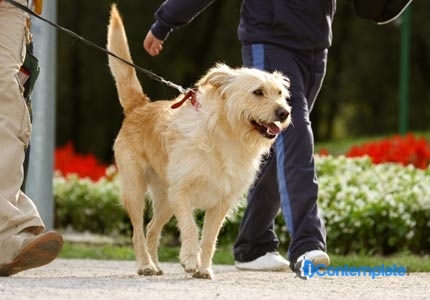I am sure you have heard the saying “You can’t teach an old dog a new trick”, right? I don’t believe it’s completely true though. I just recently started working with our 12 year old lab to lay on an orthopedic mat to help him with his arthritis. While it might be a little more difficult to teach the elderly dog, especially compared to a new pup, it’s not impossible.
However, if you have a new puppy, it should be easier to train them, than it would be an older dog. Just like it is with humans, if they get into a routine it will be more difficult to break them of their bad habits.
So, if you are looking for some basic tips in training your new puppy…or even your elderly dog, read on to learn some easy, yet effective ways in getting your dog to do what is not only best for the household, but for them as well. The key is to stick with it, as some dogs are slower to learn than others.
#1 Repetition and Consistency
If you have kids then you already know that telling them to do something once doesn’t necessarily work. Breaking old habits, or creating new ones, will take a little repetition and consistency. I mentioned earlier that I am training my dog to use an orthopedic mat to help with arthritis. While he is starting to use it all on his own, it has been taking many efforts on my part to get him to that point.
With persistence also comes consistency. If you use a certain tone in your voice in the beginning, stick with it throughout the process. The same can be said for the words you use and actions you take. For example, when I want my lab to use the mat, I simply say “mat” and point to it. And, it’s working.
So, don’t give up, no matter how long it takes. It will take a great deal of patience on your behalf, more so with certain dogs. If you don’t stick with it, don’t expect them to start doing something all on their own.
#2 Prevent a Runaway Pup
To prevent your dog from running away when they are outside, you might want to implement a fence, such as a traditional, underground, or wireless system. There are pros and cons to each one, including the following:
- Traditional: will keep other animals from coming into the yard, but can be cumbersome in appearance
- Underground: less expensive to purchase, but more costly or time consuming to install
- Wireless: easy to install, but trees and other objects can block the signal that is needed to work
Another perk to a petsafe wireless collar is that it can be used for other obedience training. The key to using the collar system is to make sure that the setting is not too high where it would harm your dog. That’s best done by starting with the lowest level possible, and working up slowly, if needed. We used one on two different dogs. For one, the lowest setting was enough to deter him from bad actions. In fact, I could pick up the TV remote and he would stop what he was doing, even without the collar on.
On the other hand, the other didn’t flinch a bit on any setting, making that form of training useless for him. Oddly, both dogs were the same breed and weight.
#3 Using a Reward System
A longtime and popular method to training is to reward your pet for their good behavior. You often see this when performing tricks, such as “sit”, “shake”, and “lie down”. It’s best to not over indulge them with multiple snacks that are going to increase their weight, but rather a small dog treat.
When giving them the reward, shower them with praise using a pleasant voice and a pat on the back. Soon, they will be doing it just for the praise. Dogs are eager to please their owners, and will often learn to behave for a simple “Good boy!”
#4 The Voice
Speaking of using your voice, make sure you use a pleasing tone so they know they are pleasing you. After all, that is what they are seeking…our approval, praise, and companionship. Don’t yell at them, because it will just shut them down. If this sounds familiar, it’s because it’s just like how we talk to our kids. The more we yell, the less they listen.
Use their name often when praising them, and pet them often as well. Also, use simple and very few words when training. For example, if you want your dog to get down from the couch, say “down” and point. This is less confusing, as they obviously don’t know the English language to decipher multiple words.
#5 Housebreaking a New Pup
Ah yes…the dreaded potty training. It has to be done, so do it right from the start. Keeping your pup on a regular feeding and drinking schedule plays a key role, mainly so you can learn their schedule for potty breaks.
It’s important to take him outside immediately after eating, because their system digests food quickly. Watch him to see when he relieves himself and praise him for doing it. Then, immediately take him back inside to show him that the reason for going out was to go potty.
As soon as you see him starting to urinate in the house, swoop him up to take him outside. He will eventually catch on that this is what he needs to do. Don’t wait for him to bark to let you know though. My current dog has never barked to go outside. He paces the floor instead.
Take away his food and water at night so you don’t have to worry as much during the night. Instead, give him a couple ice cubes to keep his mouth hydrated.
These are basic tips that often will help in training a dog. Just keep in mind though, that each dog is unique and can respond, or not respond, differently to various techniques.
As a freelance writer, Kathy Barber often looks to the Internet for inspiration on new topics. For example, when visiting the site http://www.doggyfence.com/, she decided to write some articles on dog obedience. Other topics she has tackled include Internet business, home improvement, health, and home brewing. Living in Michigan, Kathy is married with a young son. The Barbers enjoy camping, sporting events, entertaining, and spending time with extended family.





